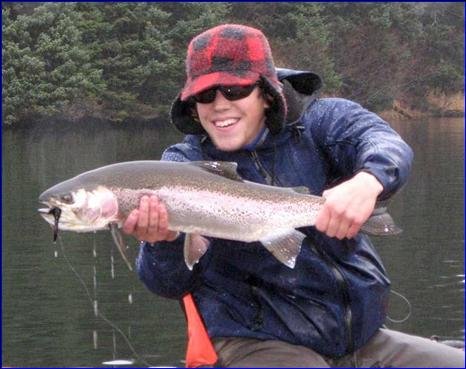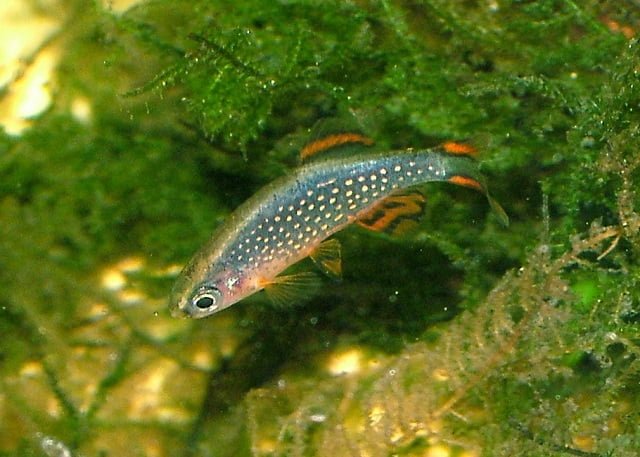by University of Jyväskylä
Researchers at the University of Jyväskylä, Finland, have found that the larvae of freshwater pearl mussel survive best in the original salmon fish population of their home river.

Only salmon and trout suit the mussel
The freshwater pearl mussel larvae live as parasites on the gills of fish. The larvae grow and develop attached on the gills for 9 to 11 months, and then drop to the river bottom as tiny mussels.
“In our previous studies we have proved that the mussel larvae are able to attach only to the gills of the salmon or the trout, and that in big salmon rivers the best host for the mussel is the salmon and in smaller rivers the trout,” says Professor Jouni Taskinen, Director of the Konnevesi Research Station of the University of Jyväskylä and the LIFE Revives project. “In this study we wanted to find out if the freswater pearl mussels have adapted particularly to the salmon fish population of the home river.”
In the study, salmon and trout rivers were compared by joining mussel larvae with fish species of the home river and other rivers. The experiments were made in rivers and brooks in Lapland, Northern Ostrobothnia and Kainuu.
The original host fish of the home river is the most welcome
The freswater mussel larvae attached the best particularly to the individuals of the salmon fish populations that lived in the same brooks and rivers. The larvae also grew best on the fish of the home river.
“For example, in the upper course of Luttojoki in Ivalo, we cross-exposed the fish of Hanhioja and Kolmosjoki with the mussels of both rivers, and the result was clear: The mussel larvae of Hanhioja attached the best to the Hanhioja salmon and the mussel larvae of Kolmosjoki to the Kolmosjoki salmon,” Taskinen says. A third salmon population that was unfamiliar to both rivers was also used in the experiment, and it was the population to which the larvae attached the worst in both rivers.
Extinction of original migratory fish populations threaten the mussel
The freshwater pearl mussel is endangered and in many places has disappeared from our nature regardless of the preservation work that started in the 1950s. Dams built to produce water power have obstructed fish migration, with the result that now many salmon and trout populations are almost lost. The losses to the fish economy caused by hydropower has been compensated with compensatory fish stocking. The research results demonstrated that if a salmon fish population other than the original population of the river is used in a stocking, it may not be that beneficial for the mussel. It does not help the mussel either if stocking takes place in a sea area and the fish do not return to spawn in their home rivers.
“For the endangered freswater pearl mussel, it would be important to restore the original fish populations and their natural migration to rivers,” says Taskinen. “When possible, the original salmon population of the river should be favoured in compesatory fish stocking, and the stockings should be made in the rivers instead of sea to be beneficial to the freswater pearl mussel”.
Stay Always Informed
Join our communities to instantly receive the most important news, reports, and analysis from the aquaculture industry.
Expert Contacts
Jouni Taskinen
University of Jyväskylä
jouni.k.taskinen@jyu.fi
Office: +358 40 355 8094
Jouni Salonen
University of Jyväskylä
jouni.k.salonen@jyu.fi
Office: +358 040 750 9537
Reference (open access)
Taskinen, J., & Salonen, J. K. (2022). The endangered freshwater pearl mussel Margaritifera margaritifera shows adaptation to a local salmonid host in Finland. Freshwater Biology, 67, 801– 811. https://doi.org/10.1111/fwb.13882
Editor at the digital magazine AquaHoy. He holds a degree in Aquaculture Biology from the National University of Santa (UNS) and a Master’s degree in Science and Innovation Management from the Polytechnic University of Valencia, with postgraduate diplomas in Business Innovation and Innovation Management. He possesses extensive experience in the aquaculture and fisheries sector, having led the Fisheries Innovation Unit of the National Program for Innovation in Fisheries and Aquaculture (PNIPA). He has served as a senior consultant in technology watch, an innovation project formulator and advisor, and a lecturer at UNS. He is a member of the Peruvian College of Biologists and was recognized by the World Aquaculture Society (WAS) in 2016 for his contribution to aquaculture.




